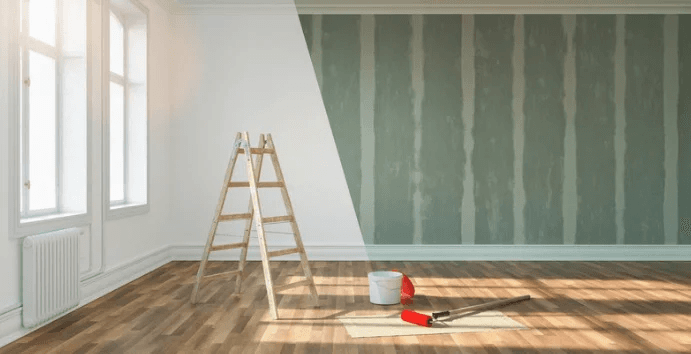House renovation costs depend on factors like project size, materials, labor, and location. By understanding these variables, you can simplify budgeting, reduce stress, and make informed decisions. Prioritize needs, set a contingency fund, and explore cost-saving options to achieve a successful renovation within your budget. This guide aims to make the process easier. By understanding the factors that influence construction costs and leveraging smart planning strategies, you can minimize surprises and achieve your dream home improvement without unnecessary stress. Whether you’re looking for a budget-friendly update or a luxurious transformation, this article provides the insights, tips, and strategies you need to get started.
Average Costs for Common Renovation Projects
Understanding how much does a renovation cost can help you set realistic expectations and prioritize your projects.
Kitchen Renovations
Kitchen remodels are among the most popular—and expensive—renovation projects.
- The type of kitchens we do start at $40,000
- High-end remodels: Custom cabinetry, high-end appliances, and luxury finishes can push costs to $80,000 or more.
Bathroom Renovations
Bathrooms are another area where costs can vary significantly based on size and finish.
- Small bathrooms: Basic updates like tiling, fixture replacements, a new vanity, and fresh paint can cost between $28,000 and $38,000.
- Medium bathrooms: Upgraded materials, modern fixtures, custom cabinetry, and improved layouts typically range from $38,000 to $48,000.
- Luxury bathrooms: Adding spa-like features, such as rainfall showers or heated floors, can cost $30,000 or more.
To get a more accurate estimate for your bathroom renovation, use our bathroom cost calculator to check your specific costs based on your preferences.
Bedroom Renovations
Bedrooms are typically less expensive to renovate compared to kitchens and bathrooms, but upgrades can still have a big impact.
- Basic updates: Repainting walls, updating flooring, and adding new lighting can cost $5,000–$10,000.
- Major upgrades: Adding custom wardrobes or walk-in wardrobes or enlarging the room can push costs to $ 20,000 or more.
Living Room Renovations
Living rooms serve as the central hub of the home, and renovations here can significantly enhance comfort and aesthetics.
- Basic updates: Repainting, upgrading lighting, and refinishing floors typically start at $15,000
- Extensive renovations: Installing new windows, adding built-ins, or upgrading fireplaces can add $30,000
Whole-House Renovations
Full home renovations require substantial investment but offer the potential for a complete transformation.
- Partial renovations: Updating a few rooms without major structural changes may cost $50,000–$100,000.
- Full renovations: Projects including kitchen and wet area upgrades involving structural work, electrical upgrades, and plumbing can start at around $200,000.
Tip: Plan whole-house renovations in phases if your budget doesn’t allow for a single large project. For broader insights into renovation costs in Australia, check out this guide on the average cost of renovations.
Factors That Impact House Renovation Cost
Several factors to consider contribute to the total cost of house renovations depending on the scope of work. By understanding these key variables, you’ll be better equipped to create an accurate budget and avoid unexpected financial challenges.
Renovating an entire house in one stage, as opposed to doing it in stages, can actually be more cost-effective as we’re bringing in tradespeople less often.
Size and Scope of the Renovation
The size and complexity of your structural renovation project significantly influence costs.
- Small-scale projects: Upgrading one room, such as repainting walls or replacing fixtures and appliances, tends to be less expensive. For example, a basic bedroom refresh might cost a few thousand dollars, depending on materials and labor.
- Large-scale renovations: Whole-house renovations or major room remodels, such as kitchens or bathrooms, are more expensive. These projects often involve structural changes, electrical upgrades, and plumbing work, which add to the overall cost.
Different renovation types also vary in price. Such as:
- Kitchen renovation: These are typically among the most expensive, given the cost of appliances, benchtops, and joinery.
- Bathroom upgrades: While smaller in size, bathrooms often require specialized materials and labor, driving up costs.
Material Choices and Quality
The quality of the materials you choose plays a critical role in determining costs.
- High-end materials: Options like hardwood flooring, marble benchtops, or custom cabinetry can add elegance but come at a premium price.
- Standard materials: More affordable choices, such as laminate flooring or quartz benchtops, provide durability and style without breaking the bank.
Tip: Balance aesthetics with functionality. For instance, consider mid-range materials for areas that see heavy use, ensuring durability without overspending.
Labor and Contractor Fees
Labor costs vary based on the type of work, the contractor’s expertise, and your location.
- Skilled professionals: Hiring licensed and experienced contractors ensures quality work but may cost more upfront. However, this investment can save you money in the long run by avoiding the need for costly repairs or corrections.
- Regional differences: Labor rates tend to be higher in urban areas compared to rural locations, but it can also be difficult to get to these areas.
Pro tip: Always request detailed quotes and ensure your scope has been covered to avoid hidden fees. Ask plenty of questions.
Location and Accessibility
Your home’s location can impact renovation costs in several ways.
- Urban areas: While contractors and materials are readily available, prices may be higher due to demand and overhead costs.
- Rural areas: Transportation and delivery fees for materials may increase expenses, especially if your property is in a remote location. For reliable and professional support, explore our home renovation services tailored to meet your needs.
Tips for Managing Your Renovation Budget
Average home renovation costs can quickly become expensive if not managed carefully. Follow these tips to stay on track and minimize financial stress.
Plan and Set Priorities
Define your goals and identify which aspects of your renovation are most important.
- Prioritize needs over wants: Focus on essential upgrades, such as structural repairs or safety improvements, before tackling aesthetic changes.
- Create a detailed plan: Outline each phase of the renovation, including timelines and costs.
Review and Analyze Contractor Quotes Thoroughly
Obtaining detailed quotes from multiple contractors can help you make informed decisions. Look for quotes that clearly outline:
- Project timelines and milestones.
- Breakdown of materials and labor costs.
- Any additional fees, potential contingencies, or exclusions.
Don’t just go with the lowest bid—prioritize transparency and quality. Ensure everything you’ve requested is accounted for, and be cautious of hidden costs that could derail your budget.
Avoid Common Budgeting Mistakes
Steer clear of these pitfalls to avoid overspending:
- Underestimating costs: Always account for hidden expenses, such as permits or delivery fees.
- Skipping contingency funds: Set aside 10–20% of your budget for unexpected costs, like delays or material shortages.
Plan Your Dream Renovation with Confidence and Ease
 The cost estimate of a house renovation doesn’t have to be stressful. By understanding key cost factors and following best practices for budgeting, you can plan a successful renovation project that meets your goals and stays within your financial limits.
The cost estimate of a house renovation doesn’t have to be stressful. By understanding key cost factors and following best practices for budgeting, you can plan a successful renovation project that meets your goals and stays within your financial limits.
Our company specializes in helping clients navigate the financial aspects of their renovations with ease. We provide personalized budget planning services, detailed cost breakdowns, and practical advice on how to allocate resources effectively. Whether it’s recommending cost-saving alternatives or ensuring every expense aligns with your vision, we’re here to support you at every step.
Let us help you turn your renovation ideas into reality while keeping your budget on track. For tailored solutions and exceptional service, visit our Home Renovations Services page today.
Frequently Asked Questions
How Much Does It Cost to Renovate a House in Australia?
The cost of renovations in Australia varies significantly depending on the size and scope of the project. On average: Basic renovations (e.g., painting, minor updates): $20,000–$40,000. Mid-range renovations (e.g., kitchens, bathrooms): $40,000–$100,000.
High-end renovations (e.g., full-house renovation ):
$170,000. Factors like location, material quality, and labor rates also play a role. To get a more accurate estimate, seek quotes from local contractors.
What Costs the Most When Renovating a House?
The most expensive elements of a house renovation are typical.
Structural changes: Adjustments to walls, replacement of windows.
Kitchens and bathrooms: These spaces require specialized materials and labor for plumbing, tiling, and cabinetry.
High-end materials: Luxury finishes like hardwood floors, stone benchtops, and custom fittings can significantly increase expenses. Planning and prioritizing can help manage these costs effectively.
What Is the Most Expensive Thing When Renovating a House?
In most cases, the kitchen is the single most expensive part of a house renovation. This is due to the cost of appliances, custom joinery, benchtops, and plumbing and electrical work. Other expensive areas include structural changes and specialized features like high-end bathrooms or bespoke joinery.
Is Renovating Cheaper than Building New?
Renovating can often be cheaper than building a new home, but it depends on the project’s scope. If the existing structure is sound and changes are primarily cosmetic, renovations are usually more cost-effective. However, if significant structural work is required, such as fixing foundation issues or extensive rewiring, the costs can approach or even exceed the expense of a new build.
Is It Worth Renovating an Old House?
Renovating an old house can be highly rewarding, both financially and aesthetically. Benefits include: Preserving character: Older homes often have unique architectural details worth saving. Increased property value: Strategic renovations can boost resale value. Cost savings: Renovating can be more affordable than buying a new property in some markets.
However, it’s essential to evaluate the home’s condition and potential repair costs. Structural issues or outdated systems may require significant investment, so thorough inspections and cost assessments are crucial.



